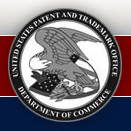Expect to pay more for, wait longer for, and get less from your patent application.

I just delivered some bad news to a client today: our estimate of what it would cost to finish up the client’s patent application. The client is a start-up whose company is not fully funded and whose product is not yet launched. Should they spend more of their precious start-up dollars on a patent application? What is the likelihood of success on the merits of the application?
I think that success on the merits has more to do with persistence than anything else. Persistence equals money. The patent process has become frustrating for applicants and patent professionals alike. It costs more, takes longer, and results in less protection than it used to. That leads many to consider cutting their losses, as this client is considering. Or just trying to keep the application “patent pending” long enough to scare off the competition. It’s ultimately a business decision. Is it worth the considerable expense to keep the application patent pending? To try to push it through to issue? I don’t know the answer to those questions, but both paths involve considerable expense.
I have joked that due to the huge backlog of patents at the USPTO, I am now a “patent pending” attorney. We’re telling our clients to expect to wait 4-6 years after filing to get a first office action from the USPTO. But it’s no joke for start-up companies who are trying to make ends meet.
Patent law in the United States is undergoing significant changes in all three branches of government. These changes are the most sweeping and significant in my lifetime. And it doesn’t help that we’re in an election year.
- In the judicial branch, recent court cases have redefined key terms such as “nonobvious.” See KSR v. Teleflex, 550 U.S. ___, 127 S. Ct. 1727 (2007).
- In the legislative branch, proposed changes to the Patent Act are making their way through the House of Representative and the Senate. See the Patent Reform Act of 2007.
- In the executive branch, the USPTO wrote new rules (which were scheduled to go into effect 11/01/07 and are currently on hold due to an ongoing lawsuit) that drastically limit the number of claims in a patent application and in a family of patent applications. The new rules apply to future patent applications as well as existing pending patent applications.
Taken as a whole, these changes are making it harder than ever to get a patent.
In 2006, the USPTO patent allowance rate was 54%, the lowest percentage in history. I expect allowance rates to continue to decrease as the USPTO tries to catch up on the backlog of patent applications. Hiring more patent examiners would also help, but it doesn’t look like the USPTO is going to do that. The patent bar is understandably quite upset about the proposed and implemented changes to patent law, especially the 11/01/07 new patent rules, and the USPTO is being sued to stop the implementation of the new rules.
But I don’t expect the complaining, lobbying, and litigating from the patent bar and inventor advocacy groups to make any meaningful difference. I expect that patent law will continue to evolve. Patent practitioners and patent applications are going to have to adapt to the new changes.
So what does that mean to patent applicants?
The following assumes that the 11/01/07 rules will get implemented. In the short term, many pending applications will need to be amended. If your pending application has more than 5 independent claims or more than 25 total claims, then you should consider filing an amendment to reduce the claims to the new 5/25 limit. Applications with “too many” claims have already been tagged as “noncompliant” in the USPTO’s database. Do you want your patent applications to be on the “nice list” or the “naughty list”? If your patent portfolio includes continuing applications (continuation applications, divisional applications, and requests for continued examination (RCE)), then you should consider consolidating the applications to comply with the rules. A family of applications is only allowed one RCE by right, 15 independent claims, and 75 total claims. This makes the divide-and-conquor strategy of turning one application into multiple divisional applications (so-called “voluntary” divisionals) no longer viable.
In the long term, the new rules make it more important than ever to do a good patent search, write a good specification, and write a limited number of strong claims. Kitchen-sink disclosures that include information about multiple inventions should now be discouraged in favor of separate narrow applications. Patent appeals should be pursed more frequently. Provisional patent applications now become more attractive, as they will give patent applicants more patent-pending time (one year more) and more time to consider which claims are worth pursuing.
The new rules are designed to reduce the patent backlog. Ironically, by limiting the number of claims and continuing applications, the new rules (if finally implemented) will result in more patent applications being filed, which will only increase the patent backlog.
There are many problems with the patent system. Bad patents get issued. Searches are not required by law. USPTO funds are diverted (or “stolen” depending on how much spin you’d like) for non-patent purposes. But the current proposed changes don’t fix the underling problems. Clock Tower Law Group’s clients are typically small software start-ups who are using patents for defensive purposes. If patent law continues to change to make it harder and more expensive for the little guys to get patents, then only the large, established, rich companies will be able to afford patents. The rich get richer, the poor get poorer. That doesn’t sound like the American dream to me. Or good patent reform.
Related Posts
- Drawing That Explains Patent Costs
How to control the cost of filing a patent. - Drawing That Explains Provisional Patent Applications
Provisional patent applications are rarely the best solution for startups. - Drawing That Explains Patent Disputes
And what’s wrong with law school education. - Drawing That Explains Patent Laws
From Chief Justice to the patent examiner. - Uncool: USPTO Breaks Millions Of Patent URLs Without Public Notice
Static URLs? We don’t need no stinkin’ static URLs! - Easy To Infringe
Draft to the rule, don’t draft to the exception. - How To Get And Defend A Patent Without Going Broke
It is possible for independent inventors and small businesses to acquire patents and protect their ideas without going broke in the process. - Software Patents: Good Or Evil? (Part 1)
- Patents vs. Trade Secrets
The advantages and disadvantages of protecting business ideas with patents and trade secrets.

